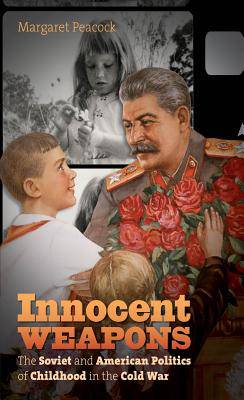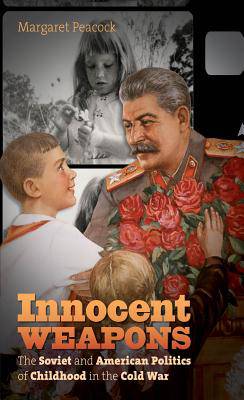
- Afhalen na 1 uur in een winkel met voorraad
- Gratis thuislevering in België vanaf € 30
- Ruim aanbod met 7 miljoen producten
- Afhalen na 1 uur in een winkel met voorraad
- Gratis thuislevering in België vanaf € 30
- Ruim aanbod met 7 miljoen producten
Zoeken
€ 53,45
+ 106 punten
Omschrijving
In the 1950s and 1960s, images of children appeared everywhere, from movies to milk cartons, their smiling faces used to sell everything, including war. In this provocative book, Margaret Peacock offers an original account of how Soviet and American leaders used emotionally charged images of children in an attempt to create popular support for their policies at home and abroad.
Groups on either side of the Iron Curtain pushed visions of endangered, abandoned, and segregated children to indict the enemy's state and its policies. Though the Cold War is often characterized as an ideological divide between the capitalist West and the communist East, Peacock demonstrates a deep symmetry in how Soviet and American propagandists mobilized similar images to similar ends, despite their differences. Based on extensive research spanning fourteen archives and three countries, Peacock tells a new story of the Cold War, seeing the conflict not simply as a divide between East and West, but as a struggle between the producers of culture and their target audiences.
Groups on either side of the Iron Curtain pushed visions of endangered, abandoned, and segregated children to indict the enemy's state and its policies. Though the Cold War is often characterized as an ideological divide between the capitalist West and the communist East, Peacock demonstrates a deep symmetry in how Soviet and American propagandists mobilized similar images to similar ends, despite their differences. Based on extensive research spanning fourteen archives and three countries, Peacock tells a new story of the Cold War, seeing the conflict not simply as a divide between East and West, but as a struggle between the producers of culture and their target audiences.
Specificaties
Betrokkenen
- Auteur(s):
- Uitgeverij:
Inhoud
- Aantal bladzijden:
- 304
- Taal:
- Engels
- Reeks:
Eigenschappen
- Productcode (EAN):
- 9781469633442
- Verschijningsdatum:
- 1/02/2017
- Uitvoering:
- Paperback
- Formaat:
- Trade paperback (VS)
- Afmetingen:
- 152 mm x 235 mm
- Gewicht:
- 439 g

Alleen bij Standaard Boekhandel
+ 106 punten op je klantenkaart van Standaard Boekhandel
Beoordelingen
We publiceren alleen reviews die voldoen aan de voorwaarden voor reviews. Bekijk onze voorwaarden voor reviews.








